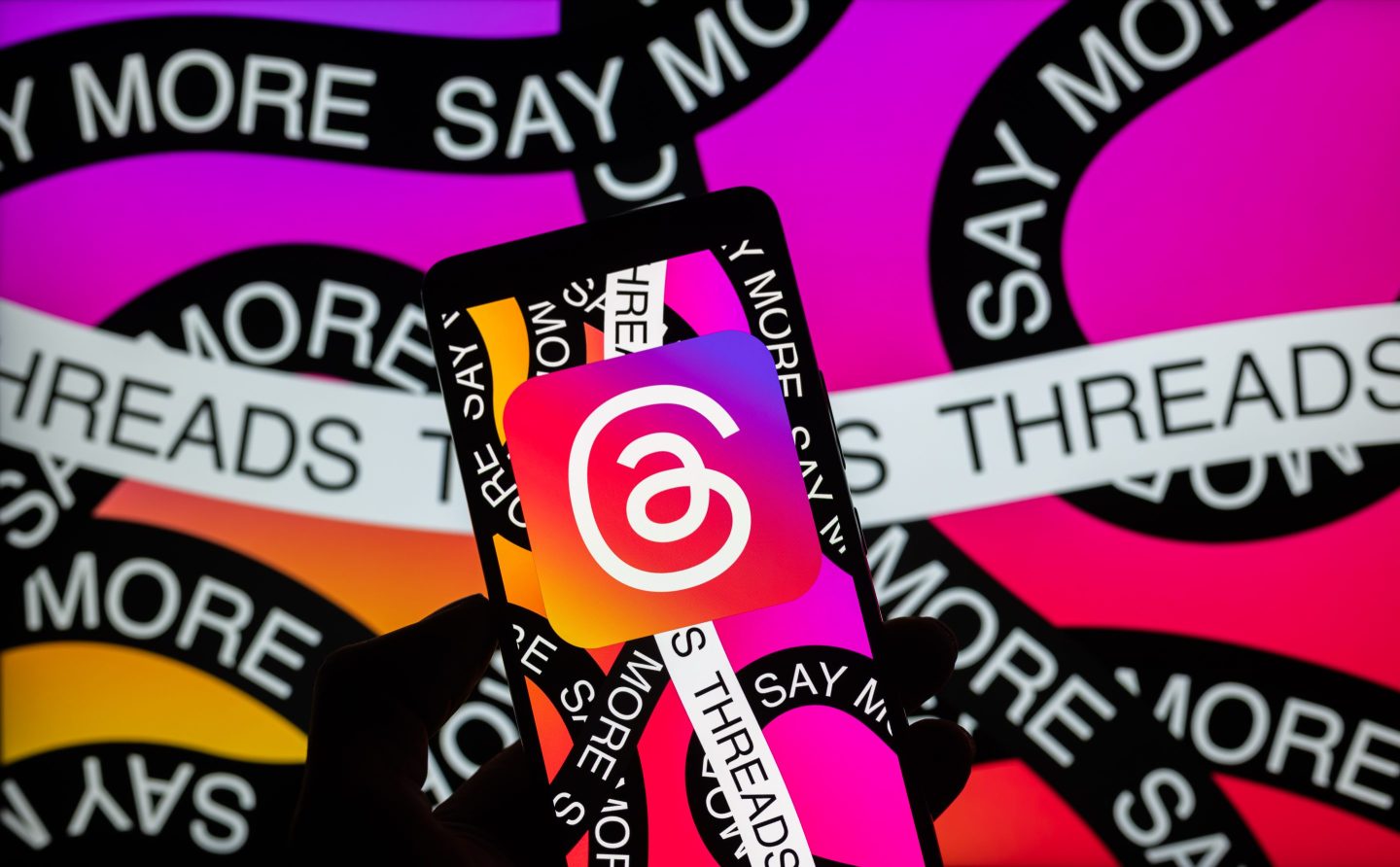Meta’s Threads has finally launched here in the EU. “Welcome everyone,” says Zuck. The launch “could create problems with EU regulators,” says The Verge, but even I don’t want to write about that subject every day, so let’s focus on the service itself.
The launch is only the latest element in a flurry of Threads activity in recent days. Last week, Threads started rolling out tags worldwide following a test in Australia. Yesterday, Instagram chief Adam Mosseri announced in a post that is no longer available that Threads (which is still tied to the more venerable picture-sharing service) will get dedicated fact-checking next year, which will be packed with elections everywhere from the U.S. to the EU to India. “We currently match fact-check ratings from Facebook or Instagram to Threads, but our goal is for fact-checking partners to have the ability to review and rate misinformation on the app,” he wrote.
Perhaps most important, Meta announced yesterday that it has begun testing long-promised interoperability between Threads and other social networks that use the ActivityPub protocol, like Mastodon.
Threads’ entry into the so-called fediverse means that people on Mastodon or Lemmy (or even WordPress, if the user downloads a plugin) will be able to see and engage with Threads posts on those platforms, and vice versa. (Only some Threads accounts are involved in the test, such as Mosseri’s, which I am now following from Mastodon.) Here’s Mark Zuckerberg, in yesterday’s announcement post: “Making Threads interoperable will give people more choice over how they interact, and it will help content reach more people.”
If you’re about to allow people to reply to and share posts from your social network without actually joining your social network, it certainly makes sense to try getting loads of people onto your network as quickly as you can—hence, I assume, the proximity of the ActivityPub and EU launch announcements.
But ActivityPub soon won’t be the only game in town when it comes to social interoperability. Fast Company yesterday published an interview with Bluesky CEO Jay Graber in which she revealed the Twitter spinout’s Authenticated Transfer (AT) protocol is nearly ready for primetime and will come out early next year. At that point, Bluesky—which it now seems is a test bed for AT—will finally stop being invite-only (see previous paragraph).
There’s also the Nostr social network and protocol, which Twitter and Bluesky creator Jack Dorsey is backing these days, and which has some popularity with the Bitcoin crowd and Edward Snowden. “I do think that having multiple protocols at this time is good, because we’re testing out what works and how these protocol design choices interplay,” Graber told Fast Company, adding that AT may at some point gain interoperability with ActivityPub and/or Nostr.
The received wisdom in the social networking field is that, if you’re up against an entrenched rival, the network-effect phenomenon means you may as well just give up. But these are different times. X-formerly-Twitter is certainly the most entrenched microblogging platform, but Elon Musk has suggested that it may not be long for this world, and reported details of its plummeting ad revenue seem to back that up. (EU privacy activist extraordinaire Max Schrems filed a complaint against X today, but GDPR investigations can take years, and I’d be shocked if the company is still around by the time any probe concludes.)
The market really is up for grabs now, and there is no clear successor to X. Sure, with Meta’s weight behind it, Threads stands a good chance of being the new place to be. Maybe Meta’s plan is to somehow take over the fediverse by extending into it. But maybe, just maybe, the promise of decentralized social media—with all its positive implications for platform diversity and variation—is about to be fulfilled.
More news below. And if you want to follow my shiny new Threads account, have at it. (Bluesky here. Mastodon here.)
David Meyer
Want to send thoughts or suggestions to Data Sheet? Drop a line here.
NEWSWORTHY
SIGNIFICANT FIGURES
$3.08 trillion
—Apple’s market cap at the close of trading yesterday. That’s approaching the value ($3.2 trillion) of the entire French stock market.
IN CASE YOU MISSED IT
FTC is investigating Adobe over its rules for canceling software subscriptions after years of customer complaints, by Bloomberg
Etsy CEO turns to sailing metaphor to rally workers after laying off 225 just before the holidays: ‘The waters may be rough right now, but there’s no other ship I’d rather be on,’ by Orianna Rosa Royle
Why retailers are betting that natural language search and generative AI is the future of shopping, by Alexandra Sternlicht
Executives from Workday, Snowflake, Adobe, and Credo AI share the top strategies for success—and the mistakes to avoid—when integrating AI into your business, by Kylie Robison
How middle managers are bridging the gap between the AI dreams hatched in the C-suite and the real world, by Kylie Robison
U.S. just gave a historic blessing to a new nuclear reactor that doesn’t use water for cooling, by Bloomberg
BEFORE YOU GO
Netflix streaming figures. Netflix has for the first time published some details of viewing time for its most popular shows. It claims this has nothing to do with the recent writers’ strike, although greater transparency was a key demand there. CEO Ted Sarandos claims this is “the exact same pool of data” that Netflix uses to “run the business.”
However, as the Financial Times’ Louis Ashworth notes in a hilariously scathing post replete with bad charts, “the data provided is rubbish,” revealing nothing more than a release date, a yes/no for global availability, and total hours viewed. The threshold for inclusion is 50,000 hours of viewing over six months, but all figures are rounded up to the nearest 100,000. Only Netflix series and films from after 2010 come with release dates.
Ashworth: “Unless we genuinely believe that this is all the metadata Netflix holds on its shows, they have provided less of a ‘pool’ and more of a ‘child’s pond-skimming net with some dead plants and scum and ooh maybe that’s a water boatman oh wait no it’s a tiny leaf.’” That sound you’re hearing is the howl of a deeply frustrated data journalist.
This is the web version of Data Sheet, a daily newsletter on the business of tech. Sign up to get it delivered free to your inbox.












